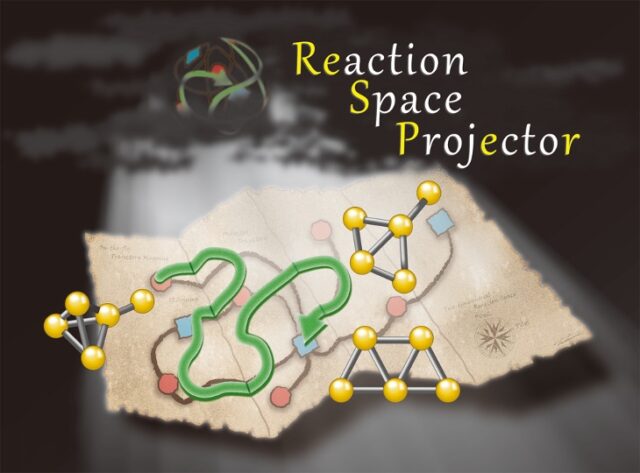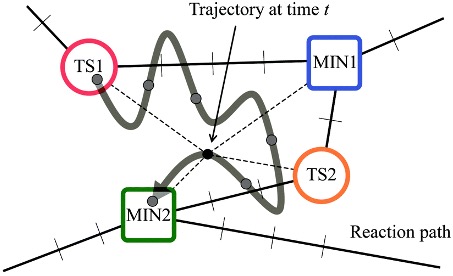Researchers at ICReDD and Hokkaido University have developed two new methods for calculating chemical reactions. The on-the-fly trajectory mapping method and the Reaction Space Projector (ReSPer) method, respectively, take into account certain dynamic factors that can influence chemical reactions and then visualize a molecule’s path through a “reaction space” in a comparatively easy to understand fashion.

Calculations typically describe a reaction as happening along a static reaction path connecting the reactants and the products, which can be thought of as a straight line path. The on-the-fly trajectory mapping method, however, takes into account that molecular vibrations can affect how a reaction proceeds and is able to analyze a reaction in a more dynamic fashion, considering the possibility of reaction pathways that may deviate from the original rigid path.
 Schematic picture of the on-the-fly trajectory mapping method where a trajectory runs in the reaction route map
Schematic picture of the on-the-fly trajectory mapping method where a trajectory runs in the reaction route map
The ReSPer method then takes the complicated, high dimensional trajectory mapping data from the first method and reduces the number of dimensions. This reduced data can then be displayed on a 2D map to provide an intuitive depiction of how a molecule traverses between possible structures as it goes through a reaction process.
For details, please follow the link below to view the original paper.

